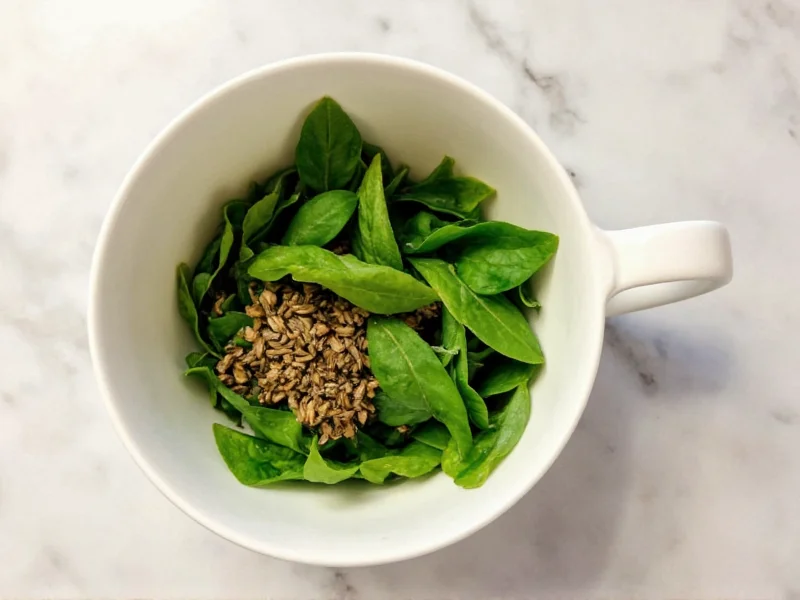When adapting recipes that call for fresh basil but you only have dried basil available, understanding the proper conversion is essential for achieving balanced flavors. The standard culinary conversion ratio between fresh and dried herbs is 3:1, meaning you need one-third the amount of dried herb compared to fresh.
Understanding the Fresh to Dried Herb Conversion
The reason for this 3:1 ratio stems from the dehydration process. Fresh herbs contain significant moisture that evaporates during drying, concentrating the essential oils and flavor compounds. When basil loses its water content, the remaining dried leaves pack approximately three times more flavor intensity per volume than their fresh counterparts.
Professional chefs and food scientists agree that this conversion ratio provides the most accurate flavor substitution in cooking. Using too much dried basil can result in an overpowering, slightly bitter taste, while too little will leave your dish lacking that distinctive basil flavor.
Practical Measurement Guide for Basil Substitution
For home cooks needing precise measurements, here's a detailed conversion chart for fresh basil to dried basil:
| Fresh Basil | Dried Basil | Best For |
|---|---|---|
| 1/4 cup (4 tablespoons) | 1 tablespoon | Sauces, soups, marinades |
| 1/2 cup | 1½ tablespoons | Pasta dishes, casseroles |
| 3/4 cup | 2¼ tablespoons | Tomato-based sauces |
| 1 cup | 3 tablespoons (1/4 cup) | Large batch recipes |
When to Adjust the Standard Conversion
While the 3:1 ratio works for most applications, certain cooking scenarios may require slight adjustments to the 1/4 cup fresh basil to dried conversion:
- Long-cooking dishes: For recipes that simmer for hours (like stews or braises), reduce the dried basil by 25% as flavors intensify over time
- Delicate dishes: In light sauces or dressings, use 2½ teaspoons instead of a full tablespoon for 1/4 cup fresh basil
- High-quality dried basil: Premium dried basil may be more potent, requiring slightly less than the standard conversion
- Old dried basil: If your dried basil has been stored longer than 6 months, you might need to increase by 10-15% as flavor degrades over time
Proper Technique for Using Dried Basil
Simply knowing the how much dried basil equals 1/4 cup fresh measurement isn't enough for perfect results. How you incorporate dried herbs affects their flavor release:
- Bloom in oil: For best flavor, add dried basil to hot oil for 30-60 seconds before adding other ingredients
- Hydrate first: Mix dried basil with a small amount of warm water or broth 10 minutes before adding to recipes
- Add early: Unlike fresh basil which is often added at the end, dried basil needs time to rehydrate and release flavors
- Store properly: Keep dried basil in an airtight container away from light and heat to maintain potency
Common Substitution Mistakes to Avoid
Many home cooks make critical errors when converting between fresh and dried basil that compromise their dishes:
- Using equal measurements: Treating 1/4 cup fresh basil the same as 1/4 cup dried basil creates an overwhelmingly strong flavor
- Adding dried basil too late: Dried herbs need time to rehydrate and release flavors during cooking
- Not adjusting for recipe type: Failing to modify the standard fresh basil to dried basil measurement for different cooking methods
- Using old dried herbs: Dried basil loses potency after 6-12 months, requiring measurement adjustments
Why This Conversion Matters for Recipe Success
Understanding the precise dried basil equivalent to fresh basil ratio directly impacts your cooking results. Basil contains volatile oils that provide its distinctive flavor, and these compounds become more concentrated when water is removed through drying. The standard culinary conversion accounts for this concentration difference.
Professional test kitchens consistently verify that the 3:1 ratio produces the most balanced flavor profile across various recipe types. When developing recipes, food scientists measure the concentration of eugenol and other flavor compounds to confirm this standard conversion provides optimal results.
Practical Application in Popular Recipes
Here's how to apply the 1/4 cup fresh basil to dried conversion in common dishes:
- Pesto: Traditional pesto uses 2 cups fresh basil. Substitute with 1/3 cup dried basil, but add 1-2 tablespoons extra olive oil to compensate for the lack of moisture
- Tomato sauce: For a recipe calling for 1/4 cup fresh basil, use 1 tablespoon dried basil added at the beginning of simmering
- Caprese salad: Avoid substituting dried basil in raw applications; the texture and flavor profile won't work well
- Marinades: When converting marinade recipes, use the standard 3:1 ratio but let the meat marinate longer to allow dried herbs to rehydrate
Storing and Maximizing Dried Basil Flavor
To get the most from your dried basil after making the proper cooking measurement conversion basil:
- Store in an airtight container away from direct light and heat sources
- Use within 6-12 months for optimal flavor (flavor degrades over time)
- Crush between your fingers before using to release more essential oils
- Consider making your own dried basil from fresh for superior flavor
When Fresh Basil Is Truly Necessary
While the herb substitution guide provides valuable conversions, some dishes simply require fresh basil for authentic results:
- Raw applications like salads and fresh pesto
- Dishes where visual presentation matters (dried basil lacks vibrant color)
- Recipes specifically designed around fresh basil's moisture content
- High-end culinary presentations where flavor nuance is critical











 浙公网安备
33010002000092号
浙公网安备
33010002000092号 浙B2-20120091-4
浙B2-20120091-4